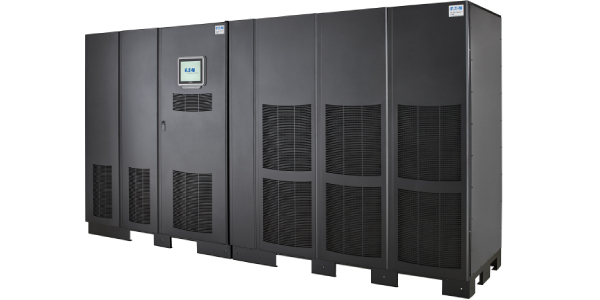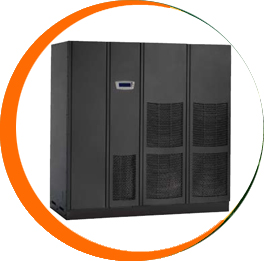 Sustainability has always been at the heart of Eaton business, which is evidenced in the introduction of the new Eaton 9395 UPS – one the first products designated as an Eaton Green Leaf Solution.
Sustainability has always been at the heart of Eaton business, which is evidenced in the introduction of the new Eaton 9395 UPS – one the first products designated as an Eaton Green Leaf Solution.
To Eaton, sustainability reflects the ability to meet the current needs of our society, while enabling future generations to better meet their own. As such, our sustainable design for products will help customers utilize electrical, fluid and mechanical power more efficiently, while significantly improving environmental performance. Eaton believes there are significant environmental benefits associated with the design of key products and solutions that will help differentiate them in the marketplace. Yet clearly, environmental claims must be supported by credible data and undergo an appropriate evaluation process.
In developing a standard for use of the Green Leaf, Eaton has endeavored to adhere to all guidance and advice offered by recognized organizations such as the European Union, the US Federal Trade Commission and ISO.
An Eaton Green Leaf
 The Eaton Green Leaf Graphic is used to identify an Eaton product, solution or service that offers proven exceptional environmental benefits. It is important that our commitment to the environment is credible and substantiated. Therefore, the Green Leaf Graphic is used only where approved for a specific product, solution or service.
The Eaton Green Leaf Graphic is used to identify an Eaton product, solution or service that offers proven exceptional environmental benefits. It is important that our commitment to the environment is credible and substantiated. Therefore, the Green Leaf Graphic is used only where approved for a specific product, solution or service.
Eaton Green Leaf Certified Solution : Eaton 9395 UPS
The Eaton 9395 UPS dramatically improves energy efficiency and sustainability, while offering a much smaller footprint than legacy systems.
Operating at greater than 94 percent efficiency, the 9395 requires less power, which in turn creates cooler operating conditions. This translates to reduced facility air conditioning requirements, while extending the life of UPS components and batteries. Even more, the 9395’s Energy Saver Mode (ESM) enables the UPS to maintain excellent input THD without the use of input filters, enabling 99 percent energy efficiency. Conversely, most competitive products must rely on input filters, which lower their efficiency rating. The use of sustainable materials and highly efficient manufacturing technology in the design of the 9395 has resulted in the lowest UPS lifestyle carbon footprint on the market, with 80 percent less energy required for production and testing. The 9395 also offers the smallest footprint in its class—50 to 60 percent less than competitive units.
Life Cycle Benefits
Four damage categories were tested in the recently conducted Life Cycle Analysis (LCA): Human health, Eco-system quality, Climate change, and Resources. From this, Eaton determined that the main impacts on these categories stem from energy losses in the UPS (approximately 74 percent) and the energy required to cool the heat dissipated. By improving energy efficiency, the Eaton 9395 has reduced the impact on all four categories over legacy and competitive systems. The most significant environmental impact is energy savings during product use. In addition to the primary benefits associated with reduced energy, the new 9395 system offers an array of secondary benefits, which are primarily a result of the unit’s significantly smaller footprint.
Furthermore, Eaton’s new transformer-less design requires less source materials such as steel and copper. As a result, the weight of each unit is reduced, which translates to a reduction in transportation emissions during shipping.
The 9395’s smaller configuration, combined with a substantial reduction in the amount of energy required for testing, results in the utilization of 80 percent less energy during manufacturing.
Eaton End of Life Benefits
The Eaton UPS business model supports the buy-back of UPSs, some of which are refurbished and sold again, thus reducing primary manufacturing impacts. Of the units that are scrapped, 90 percent of the materials are recycled, further reducing end of life impacts.
Read More: Home Generators Guide – Why Do We Need Home Generators?
Leave a Reply